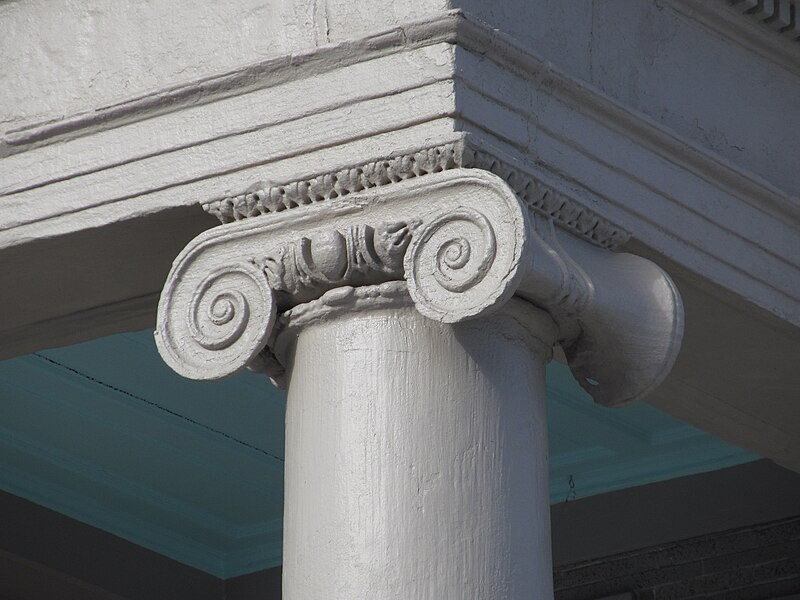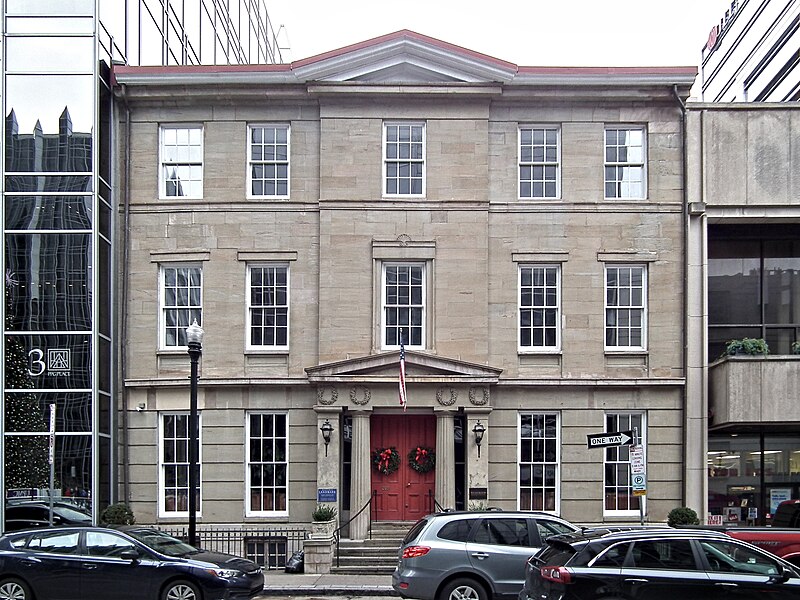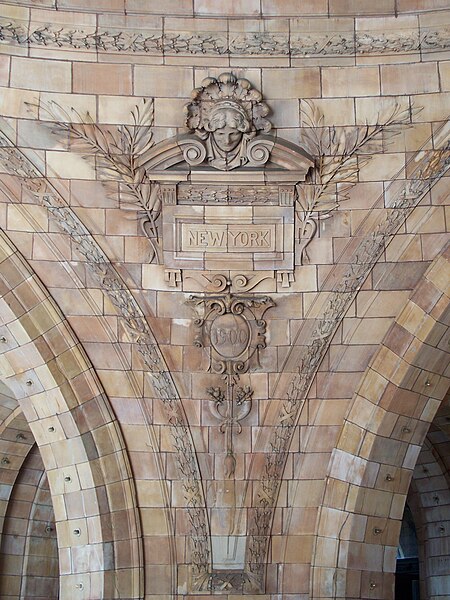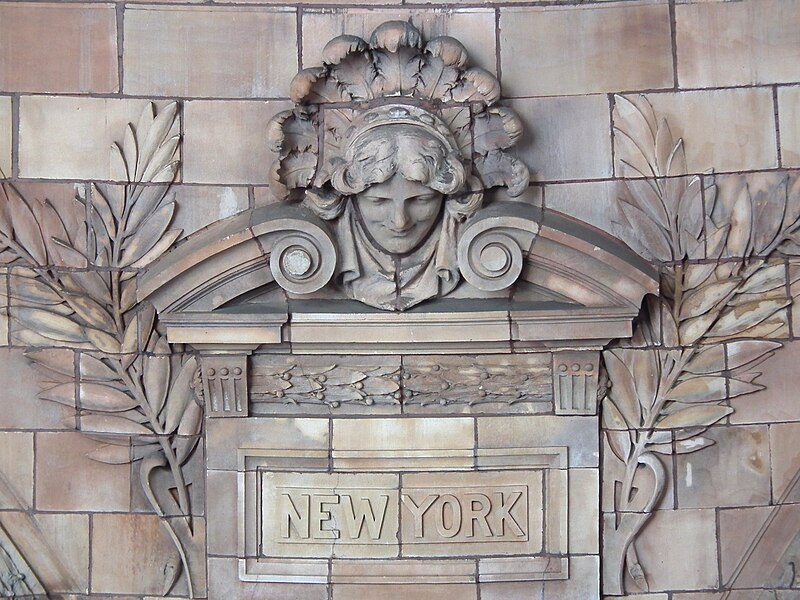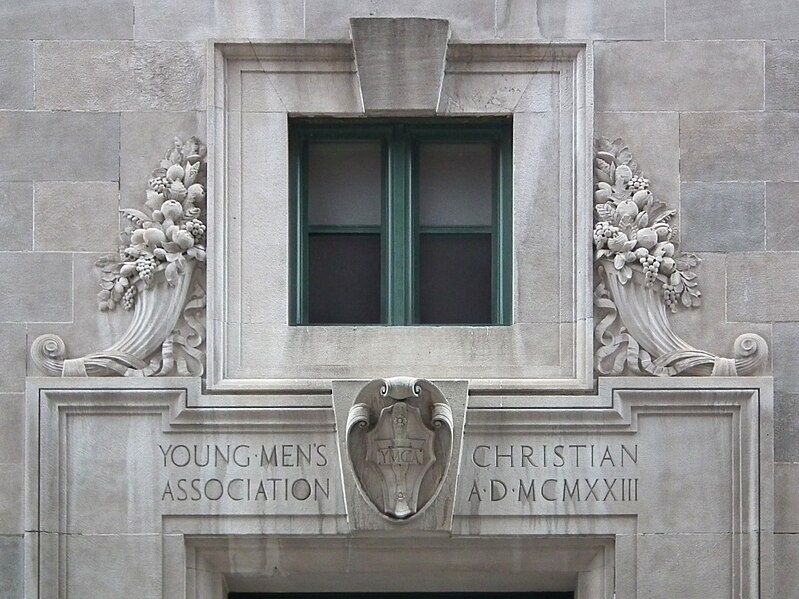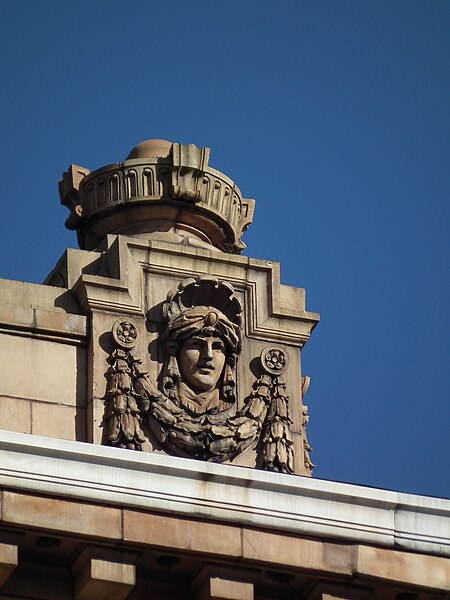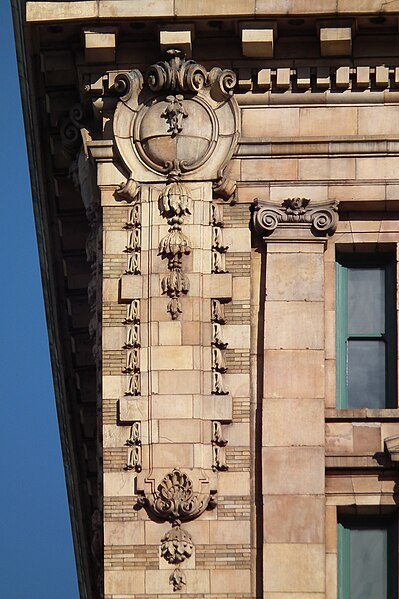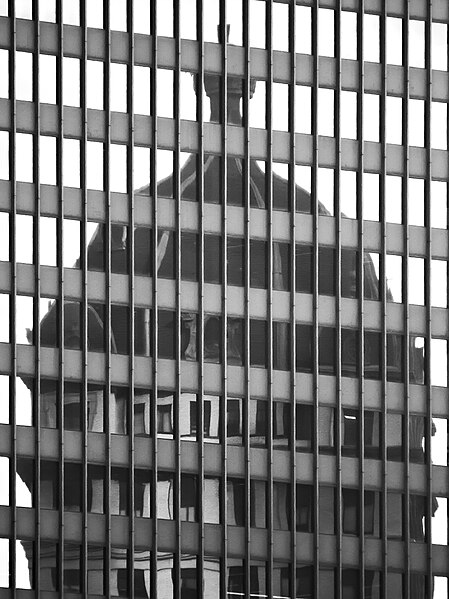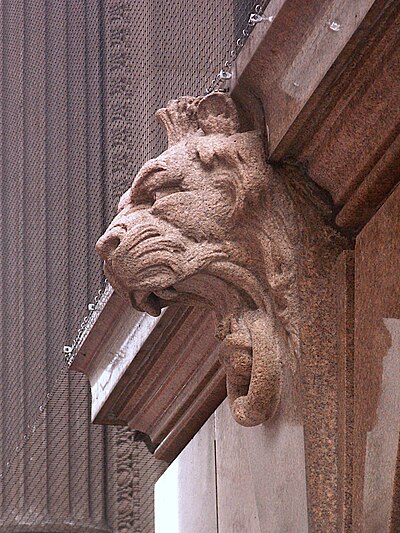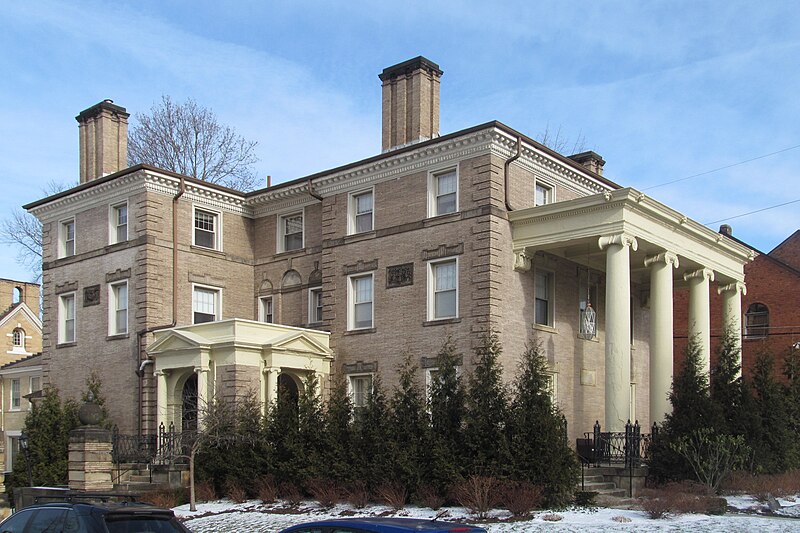
Colonial Place is one of those tiny enclaves all built at once in which Shadyside abounds. This one was built in 1898, and it is unique in that the entrance is flanked by two grand mansions.

George S. Orth was the architect of almost all the houses in Colonial Place. (See if you can guess which house old Pa Pitt thinks was not part of the original plan.) Mr. Orth had a prosperous career designing mansions for the wealthy, as well as some large institutions like the School for Blind Children. But he seems to have been forgotten faster than most Pittsburgh architects. He died in 1918; ten years later, when the architect George Schwan died at 55, his obituary in the Charette had to remind readers who Orth was: “He [Schwan] was trained in the office of George S. Orth, old time architect of Pittsburgh…” That is all the more remarkable because the Charette was the magazine of the Pittsburgh Architectural Club, of all groups the one that would be most likely to remember George S. Orth.
At any rate, Colonial Place is still a remarkably pleasant little street. The landscaping was done by E. H. Bachman, and the sycamores he planted still shade the street in summer and make a striking avenue in the winter with their stark white branches and trunks.











This mansion is currently the residence of the Greek Orthodox Metropolitan of Pittsburgh.
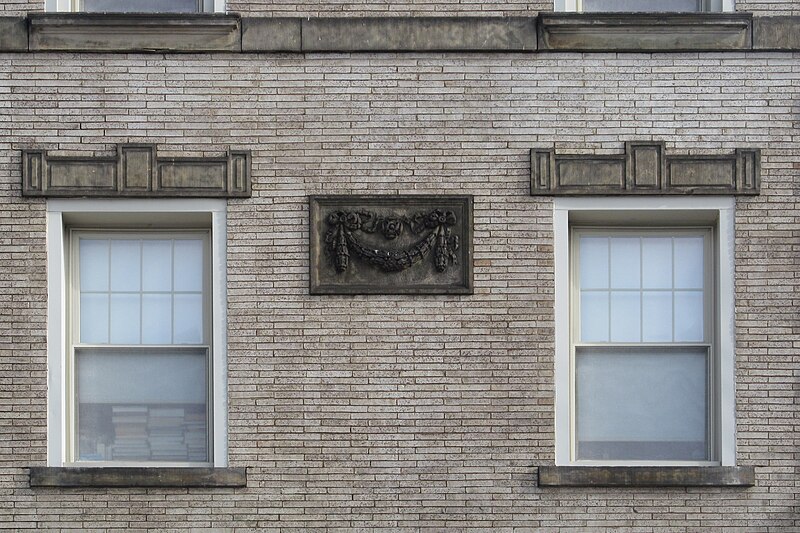

This one is currently for sale, and you can tour the interior on Google Street View (push the “Browse Street View images” standing-figure button to reveal little blue dots all over the house).

